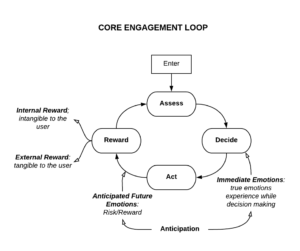
How Do We Design For Low Trust Situations?
This past spring, Stanford Learning, Design, and Technology Master student Shaan Asif ’20 was an intern in the GDT Research Group, working on innovation in low-trust areas of the world.
Network companies often cause a lot of criticism in society. Criticism in their address most often concerns: similarities of MLM marketing with the creation of fraudulent pyramid schemes; allegations of price fixing;
the actual forcing of newcomers to unreasonable expenses at the first stage;
special emphasis on expanding the plan a large-scale event network by attracting more and more low-level distributors to the detriment of actual sales;
encouraging and even forcing distributors to purchase products for personal consumption;
She and Chris Bennett collaborated on a white paper on that subject that is now available for download.
Writing an essay is extremely useful, because it allows the author to learn how to clearly and competently formulate thoughts, structure information, use basic concepts, highlight cause-and-effect relationships, illustrate experience with relevant examples, and argue their conclusions. The most relevant topic for a young https://writemyfirstessay.com professional’s essay is “Me and my career”. The subject of the essay is given so that the commission (employer) can easily assess the characteristics of your thinking, creativity, enthusiasm and potential. The best way to achieve this is to write directly and honestly, while remaining honest with yourself. If you’re not being honest, chances are your writing will be considered unnatural.
This paper concentrates on Pakistan, as Shaan has much experience in this country and performed her research there on how and why it can be a low-trust environment.
One important takeaway is the framework that was constructed for this paper.
(Asif & Bennett, 2021)
The critical tasks that organizations can follow to increase trust (and innovation) are discussed in this framework:
Create Small Teams
Research also shows that small teams are ideal for positive spontaneous norm formation, as the group size provides visibility and creates dependence among team members, who are then in a position where holding one another to norms of mutually beneficial actions is preferable (Fukuyama, 2000).
Emphasize Dependencies
Due to the reality of resource scarcity, it is critical that employees understand that their job security and job performance is not contingent upon others’ failure, but on collective success (Asif & Bennett, 2021).
Model Caring Behavior
(The) Dutch company Krauthammer has set one of its values, “Passion for People”, to reflect the importance of taking care of and showing concern for coworkers (Six & Sorge, 2008).
Praise the Process, Not the Person
Our aim in this step of the trust-building process is to disrupt the norm of individual glory, through introduction of a new norm: praising the process rather than the person (Asif & Bennett, 2021).
This research for this paper also harkens back to a d.school pop-up class that Chris Bennett and Margarita Quihuis taught back in 2014 with colleagues Mark Nelson, current Dean of the Air Force Cyber College Karen Gutierri, and retired Special Forces Colonel Robert Jones.
This was a class to explore how game design thinking, behavior design, and online sharing economy exchanges can disrupt the way we understand and build trust in conflict environments.
We had several hypotheses that students used to develop trust methodologies for their own problem/solution matrixes:
- There are individual components of trust.
- If we start with an artificial form (of trust) we can get to a more natural form.
- There are X mechanisms needed to move from an artificial state of trust to a natural one.
- How would we design a game that establishes the rules upfront, but then in the play of the game, perceptions, and rulemaking become more natural?
- Once we learn a tool, how do we apply it to the situation at hand?
- Core Loops: what do people do once they start to play?
- Compulsion Analysis: how does behavior develop over time with sustained acts? How do we design for sustained play?
So an important first step in building trust in low-trust environments is identifying where the trust is breaking. Once those areas are identified, artificial trust mechanisms can be designed, integrated, and practiced to help scaffold to natural trust mechanisms.
Once again, the concept of the core loop is key to identifying situations that are breaking trust and making changes to improve both trust and innovation.

(Bennett, 2019)
Whether it’s a Core Loop of Sexual Harassment or the Core Loop of Hate Crimes, we need to develop a Core Engagement Loop for low-trust situations that model the positive behaviors that we are after and properly reward them.

